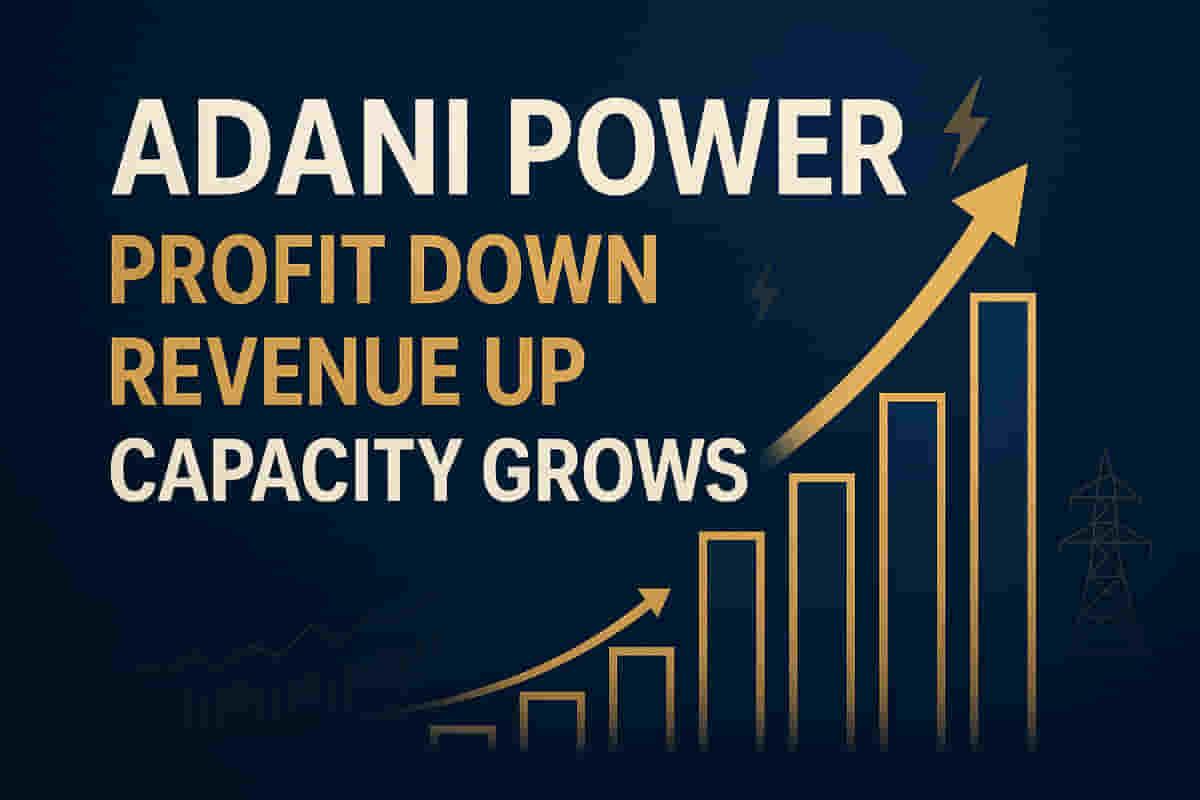Adani Power Q2 FY26 Profit Declines 11.9% to ₹2,906 Crore Amid Revenue Growth and Aggressive Capacity Expansion
Energy
|
30th October 2025, 9:57 AM

▶
Stocks Mentioned :
Short Description :
Detailed Coverage :
Adani Power Limited (APL) announced its consolidated net profit for the second quarter of Fiscal Year 2026 (Q2 FY26) was ₹2,906 crore, an 11.9% decline compared to ₹3,298 crore in the same period last year. This reduction was attributed to factors including weather-driven demand disruptions and lower merchant tariffs, alongside increased depreciation and tax expenses from recent acquisitions. However, the company's total revenue grew slightly to ₹14,308 crore in Q2 FY26 from ₹14,063 crore in Q2 FY25, while Earnings Before Interest, Taxes, Depreciation, and Amortization (EBITDA) remained nearly unchanged at ₹6,001 crore. Adani Power is aggressively expanding its operational capacity, having signed new long-term Power Purchase Agreements (PPAs) totaling 4,570 MW with Bihar, Madhya Pradesh, and Karnataka DISCOMs, expected to commence by October 2025. Furthermore, the company completed the acquisition of Vidarbha Industries Power Ltd, adding 600 MW and bringing its total capacity to 18,150 MW. Power sales volumes increased by 7.4% to 23.7 billion units in Q2 FY26. S. B. Khyalia, CEO of Adani Power, emphasized the company's operational efficiency and strategic positioning for achieving its enhanced capacity expansion goal of 42 GW by 2031-32. The company's total debt increased to ₹47,253.69 crore due to financing for capital expenditure and working capital needs to support operations.
Impact: This news is highly relevant for investors in Adani Power and the broader Indian energy sector. While the profit dip might cause short-term concern, the steady revenue, stable EBITDA, and ambitious capacity expansion plans indicate strong future growth potential. The rise in debt levels is a key factor investors will monitor. The company's strategic moves and financial health will significantly influence investor sentiment and stock performance. Impact rating: 8/10.
Difficult Terms: Consolidated Net Profit: The total profit of a parent company and all its subsidiaries after deducting all expenses and taxes. Year-on-year (YoY): A comparison of financial data for a specific period (e.g., a quarter) with the same period in the previous year. Merchant Tariffs: The price at which electricity is sold in the open market, as opposed to being sold under a long-term contract. EBITDA: Earnings Before Interest, Taxes, Depreciation, and Amortization; a measure of a company's operating performance. Power Purchase Agreements (PPAs): Contracts between electricity producers and buyers (like distribution companies) for the sale and purchase of electricity over a set duration. DISCOM: Distribution Company, an entity responsible for distributing electricity to end consumers. Capacity Expansion: The process of increasing the maximum output capability of a power plant or company. Depreciation: The systematic reduction in the recorded cost of a tangible asset over its useful life. Tax Expenses: The total amount of taxes a company is liable to pay. Bridge Financing: Short-term loans taken to cover immediate financial needs until longer-term financing is secured. Capital Expenditure (CapEx): Funds used by a company to acquire, upgrade, and maintain long-term physical assets. Working Capital Borrowings: Loans taken to manage the day-to-day operational expenses of a business. Unsecured Perpetual Securities: A type of debt instrument that has no maturity date and is not backed by specific collateral.